
The barred owl is the only large, brown-streaked, dark-eyed owl in Missouri (the barn owl is the only other large eastern owl with dark eyes). The voice is ventroloquial (hard to locate), a varied series of hoots and screams. Although this owl is not often seen, its classic series of hoots is commonly heard and easily identifiable: “hoo hoo hoohoo, hoo hoo hoohooahh,” also described as “Who cooks for you, who cooks for you all?” This owl occasionally flies during daylight, especially when disturbed. Its flight is buoyant.

Habitat and Conservation
Food
Status
Life Cycle
Human Connections
Ecosystem Connections

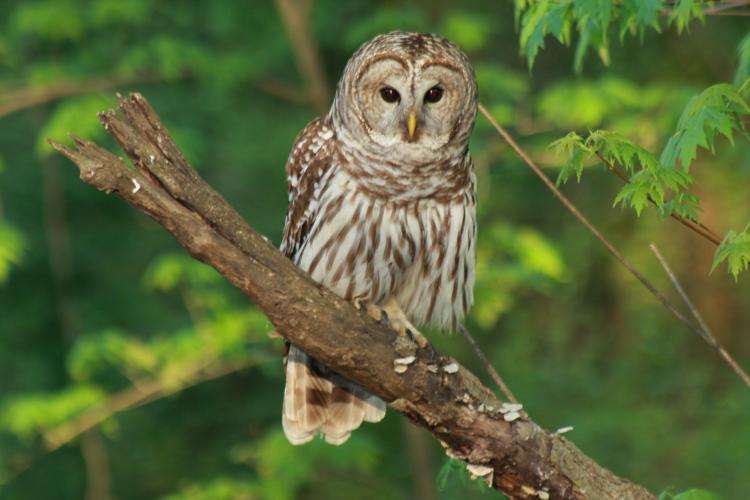
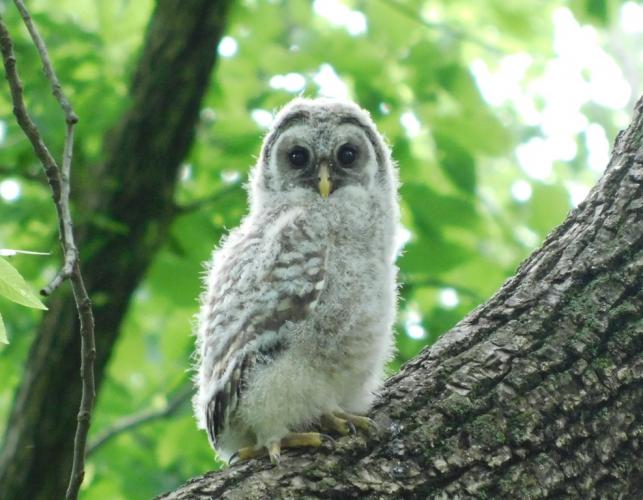
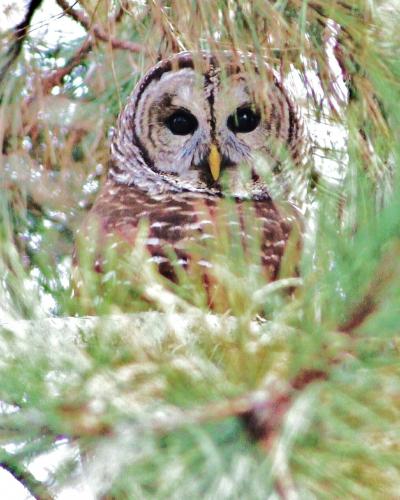

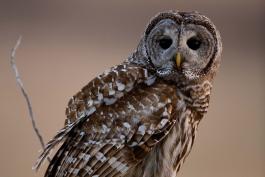

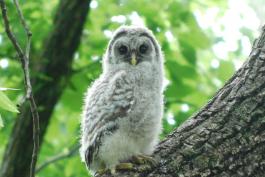




Where to See Species
About 350 species of birds are likely to be seen in Missouri, though nearly 400 have been recorded within our borders. Most people know a bird when they see one — it has feathers, wings, and a bill. Birds are warm-blooded, and most species can fly. Many migrate hundreds or thousands of miles. Birds lay hard-shelled eggs (often in a nest), and the parents care for the young. Many communicate with songs and calls.
























